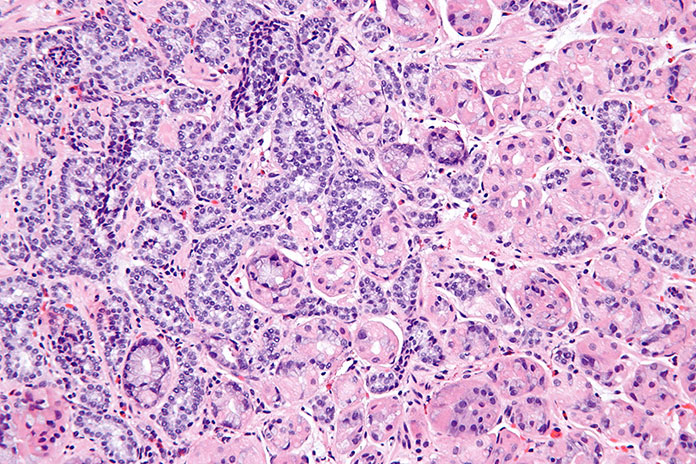Life of a pie actor Irrfan Khan recently stated that he has been diagnosed with a rare and complex disease. 51-year-old star further revealed the diagnosis of neuroendocrine tumor. However, he has not yet revealed which stage of the condition he is suffering from. Though being a rare disease, it came into the spotlight again after this. Here’s all you need to know about the Neuroendocrine Tumor.
What is Neuroendocrine Tumor?
Neuroendocrine tumors are the abnormal growths that arise from cells of the endocrine (hormonal) and nervous systems. The growth seems to be in neuroendocrine cells. They most commonly occur in the intestine – lungs, pancreas, appendix and rest of the body also. A neuroendocrine tumor is a rare occurrence, with incidence much lower than other types of cancer.
Neuroendocrine cells are cells that receive neuronal input/signals released by nerve cells and release message molecules (hormones) to the blood in response to the input. There is integration between the nervous system and the endocrine system. Neuroendocrine cells found in the respiratory and digestive tracts.
Neuroendocrine tumors may be benign (Noncancerous) or malignant (Cancerous). A malign tumor can grow and spread to other parts of the body if it is not found early and treated. Whereas, the benign tumor grows but does not spread in the other parts of the body.
In 2011, Apple founder Steve Jobs suffered from neuroendocrine cancer in the pancreas and eventually dies of it.
Risk Factors
It is unclear what causes a neuroendocrine tumor. However, there are few factors that increase the cancer risk. Scientists have yet to pinpoint exactly what causes the mutations of the tumor to occur.
- People who have a rare family syndrome (Multiple endocrine neoplasia type 1 (MEN 1) & Von Hippel-Lindau syndrome (VHL)) have a higher risk of developing a neuroendocrine tumor.
- Sometimes, neuroendocrine tumors are more common in people with a family history of any type of cancer.
- Generally, it often diagnosed in 50’s or 60’s of age.
- Women are at more risk of causing Neuroendocrine tumors
- Weekend immune system person is at more risk of neuroendocrine tumor
- Uncontrolled diabetes.
- Smoking
Symptoms
Sometimes, people with a neuroendocrine tumor do not have any of below-mentioned changes. According to Mayo Clinic, neuroendocrine tumors often don’t cause signs and symptoms until late in the disease. Neuroendocrine tumors can produce and release hormones into your body that cause signs and symptoms.
1. Neuroendocrine tumors in the lungs
- Chest pain
- Wheezing
- Shortness of breath
- Diarrhea
- Redness or a feeling of warmth on your face and neck (skin flushing)
- Weight gain, particularly around the midsection and upper back
- Pink or purple marks on the skin that look like stretch marks
2. Neuroendocrine tumors in the digestive tract
- Gastric Ulcer disease
- Abdominal pain
- Diarrhea
- Nausea, vomiting, and inability to pass stool due to intestinal blockage (bowel obstruction)
- Rectal bleeding or pain
- Redness or a feeling of warmth on your face and neck (skin flushing)
3. Other symptoms
- Diabetes: Hyperglycemia (too much sugar in the blood) or Hypoglycaemia (very little sugar in the blood)
- A cough or hoarseness that does not go away
- Jaundice, which is the yellowing of the skin and whites of the eyes
- Unusual bleeding or discharge in Ladies
- Persistent fever or night sweats
- Headaches
- Anxiety
- Skin rash
Be sure to talk with your healthcare team about symptoms you experience, including any new symptoms or a change in symptoms.
In our next article, we will discuss the treatment options for Neuroendocrine Tumors.
